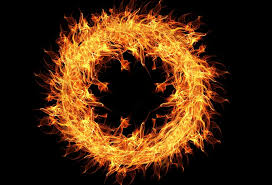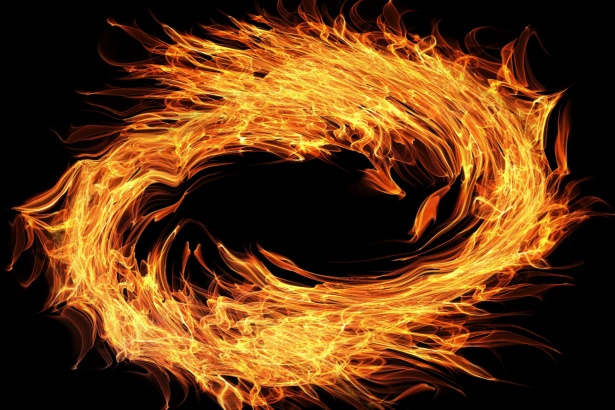Order of the Red Rose - The Fire
- Dettagli
- Categoria: Order of The Red Rose
- Pubblicato Lunedì, 12 Marzo 2018 00:33
- Scritto da Super User
- Visite: 2842
Order of the Red Rose - The Fire
One of the great responsibilities of present-day materialism is that of depriving men of the "Esoteric Sense", that is, of the ability to know and understand the meanings behind events.
Today, all this is lost and, therefore, we will never understand the events, we will never change our attitudes, thus provoking the repetition of the phenomena that, however, will become more and more authoritative and destructive.
Men are responsible for the destructive nature of certain processes of nature and changes in them.

THE FIRE
Fire is the essential divine symbol of Mazdaism and, moreover, the custody of sacred fire extends from ancient Rome to Angkor. The symbol of purifying and regenerating fire develops from the West to Japan; the Catholic liturgy of the "new fire" is celebrated on Easter night, while that of the Shintô coincides with the renewal of the year. According to some legends, Christ and some saints give back life to bodies by passing them into the fire of the forge; there are also the languages of fire of Pentecost. The role of the blacksmith introduces that of his relative, the alchemist, who creates immortality on the fire of the stove, or, in China, on the fire of the inner crucible that corresponds roughly to the solar plexus and to the manipura-chakra, posed by Yoga under the sign of Fire. The Taoists, moreover, enter the fire to free themselves from human conditioning, apotheosis about which we can not but recall that of Elijah on the chariot of fire. They penetrate the fire without burning, which - you assure - allows you to call the rain (celestial blessing), but also evokes the fire that does not burn from Western hermetism, ablution, alchemical purification, of which the salamander is a symbol. The man is fire, says Saint Martin, "his law, like that of all the fires, is to dissolve (its envelope) and to unite with the source from which it is separated". To the purifying fires we must add that of ancient China, which, in ritual enthronements, accompanied the bath and the fumigation, both - naturally - that of the ordeals, which took place almost everywhere.
In Celtic traditions, on the fire as a symbolic ritual element there is only indirect or hagiographic information; the texts mention only, in Ireland, the festival of Beltaine, "fire of Bel" of the first of May, beginning of the summer: the druids lit big fires, among which the cattle were passed to preserve it from the epidemics. At the fire of the Druids, at Uisnech, in the center of the village, Saint Patrick substituted his own, a sign that Christianity had to prevail definitively.
Caesar also speaks of the great wicker mannequins in the De Bello Gallico where the Gauls enclosed men and animals and gave them fire.
Fire occupies a pre-eminent place for its reality together dynamic and mysterious, silent and terrible, natural and at the same time ineffable. The fire has singular characteristics, loved and hated, appreciated and invisible: it illuminates and warms, vivifies and destroys, makes visible the forms and has no form in itself, it is on the earth but it reaches out to the sky, gives hope and scary fear, it is sublime but tremendous, it can be seen and used, never circumscribed and defined.
In the theological memory of the biblical Israel there is an exemplary destruction that is assumed to be a type for the entire course of the history of salvation: the punishment inflicted on Sodom and Gomorrah by fire and sulfur (Gn 19,24).
In the prophetic literature, the destruction by fire represents one of the usual instruments of divine judgment, both to strike the political and military representatives of the kingdom and the enemies.
Fire is a premonitory sign of the "day of Jahweh" (G1 3,3; M1 3,19)
The day of the Lord as an event of destruction (presence of fire), as an event of hope and enlightenment, as a definitive judgment that assures the triumph of the just and the end of sinners.
The Red Rose order considers fire as an element of PURIFICATION and SPIRITUAL RENAISSANCE.
- FIRE IS SYMBOL OF THE ORDER THAT IS LINKED TO THE LUCIFERINA CAUSE.
- THE FIRE IS THE REPRESENTATION OF THE SAME DIVINITY.

Read also
Order of the Red Rose - Statute and internal disciplines
Order of the Red Rose - The Grand Council
Order of the Red Rose - Rules of Membership
Order of the Red Rose - Profession and Membership
Order of the Red Rose - The order of Lucifer
Order of the Red Rose - The Red Rose model
Order of The Red Rose - The single above the masses
Order of the Red Rose - The Role of the Woman
Order of the Red Rose - The Fire
Order of the Red Rose - Luciferine Nights
Order of the Red Rose - The establishment of the RR
Order of the Red Rose - Double Rose Logo
Order of the Red Rose - Purification of the body
Order of the Red Rose - Blood as a means of purity
Order of the Red Rose - The demon of ardor
Order of the Red Rose - Ritual Fumigation
Order of the Red Rose - Official member seal RR
Order of the Red Rose - Sexual Rituals and Sex

